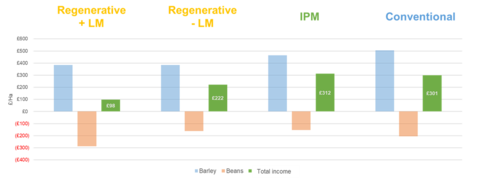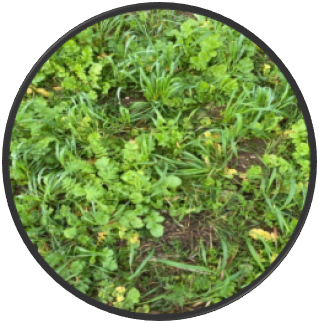
Due to much deliberation around the topic, we took the decision to split the Regen block in half for the remainder of the project, and established a living mulch in one half, with the other half being an annual cover cropping approach. The living mulch is a mix of yellow trefoil, white clover, subterranean clover and grasslands demand white clover. It was drilled using the farm’s Horsch pronto drill on September 8th and established well.
The annual cover crop which was drilled on the same day in the remaining half of the Regen and in the IPM+ block was a standard mix of black oats + phacelia + tillage radish + clover. Hindsight is a wonderful thing, and the inclusion of some frost tolerant species would have been beneficial, given the harsh frosts (-8°C) in December and again in late January. Despite establishing well and creating a good level of cover, these frosts meant that the cover crops were almost entirely lost earlier than we would have liked.
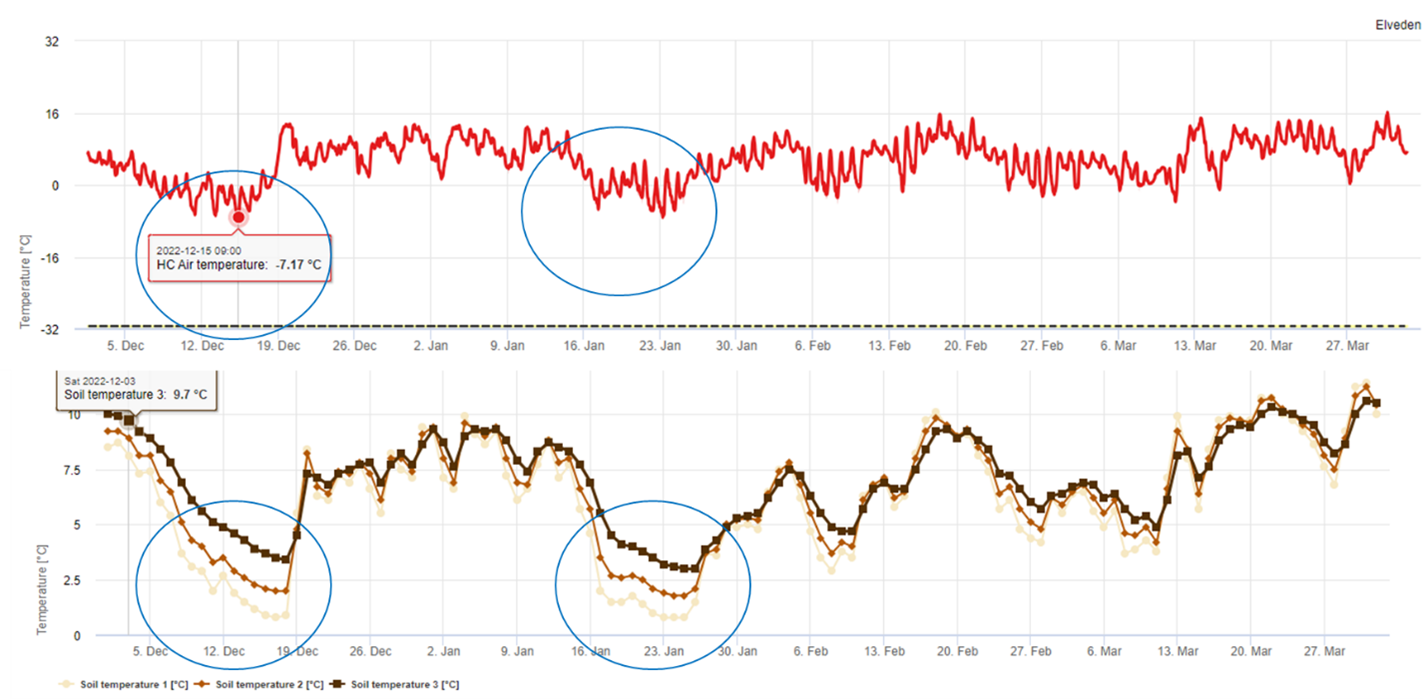
Chart above shows air temperature and soil temperature.
After ploughing, the Conventional plot was drilled at the end of October with winter beans, with the ‘maximum yield’ mindset the key driver for this choice. Unfortunately, despite good initial establishment, the harsh frosts and poor winter growing conditions left the winter beans struggling, especially at the top end of the field where Fusarium foot rot took hold and vastly reduced plant numbers.
When spring arrived, we were mindful of the small nature of the clover mulch and were careful with knocking it back and spraying off weeds before the establishment of the spring beans in the Regen LM plot. Spring beans were then drilled directly into the mulch and the remaining Regen and IPM+ plots using a Claydon drill which delivered excellent results.
The season brought many challenges, most notably we saw early chocolate spot in the winter beans, pea and bean weevil pressure in the spring crop and high numbers of black bean aphids as the weather became warmer. Extremely high temperatures again in late June (30°C) saw rust pressure increase and water availability became a limiting factor for yield.
This chart shows the yields achieved in each of the systems. There was a clear impact from the living mulch which we believe was attributed to the competition for moisture in a dry season. The harsh winter and resultant plant loss caused very low yields in the Conventional plot, with the IPM+ system delivering the highest yield.
With the announcements of SFI options in 2023 we accounted for those when considering gross income as outlined below. This includes both cover cropping (annual and living mulch), as well as the establishment of a pollinator strip which is split across both the IPM+ and Regen blocks and for the Regen area also includes the payment for non-use of insecticides.
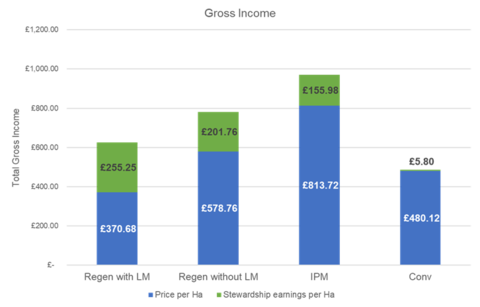
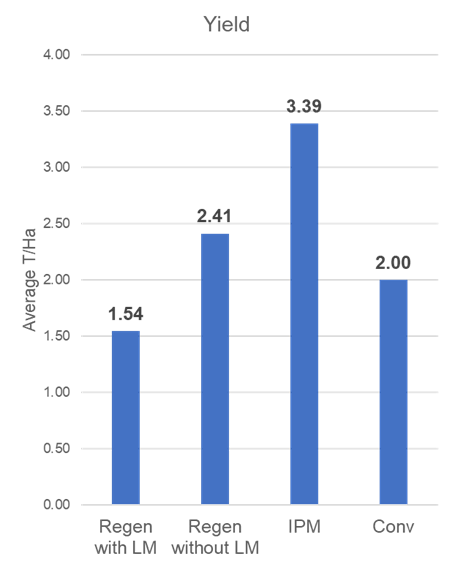
Unfortunately, net income for all systems was negative in 2023, with the Regen area including the mulch, performing worst with a loss of £287/ha, though this does take in to account the whole cost of the establishment of the mulch which we intend to maintain for a number of seasons.
The IPM was the best performing area but still with a loss of £152/ha, which again includes a proportion of the cost of establishment of the pollinator margin, and also an equal proportion of the annual SFI payment.
While the performance of the bean crop was disappointing, there are some benefits which are not directly visible in the finances to date e.g. the N benefit to the subsequent crop and soil health effects of cover crops. The season-season net income displayed below gives a view of the systems performance so far and will be added to in coming years.
